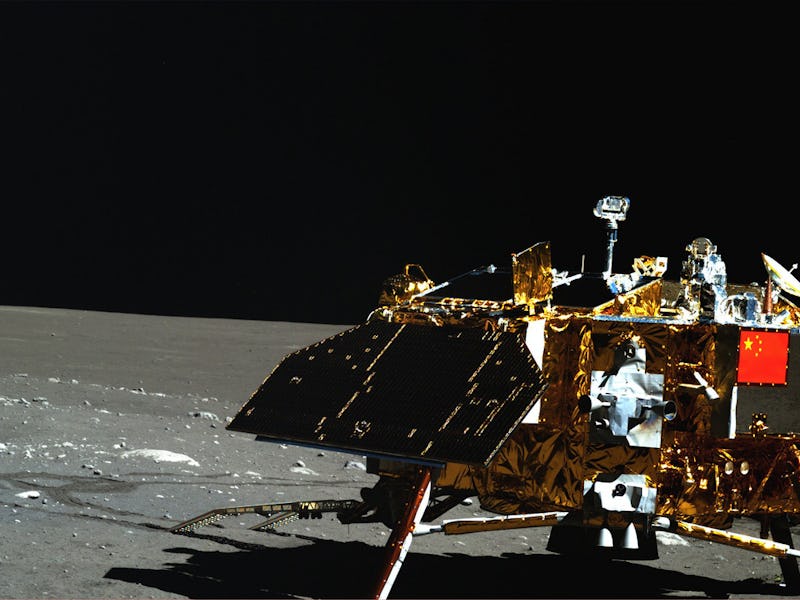China Aims for the Dark Side of the Moon for No Apparent Reason
Chinese probe is lunar equivalent of commenting "first!"

China has announced its intention to land a Chang'e-4 probe on the dark side of the moon, a feat that would be a first for space exploration. Thing is, there's a reason no one's done it before.
“We probably will choose a site on which it is more difficult to land and more technically challenging,” China’s Lunar Exploration Program chief engineer Wu Weiren told Chinese Central Television. “Our next move will probably see some spacecraft land on the far side of the moon.”
Such a technological first promises to be a gnarly landing — if Red Bull had a space program, they might be shedding a few overcaffeinated tears — though the Chinese probe will have roughly just as much light to work with as if they landed anywhere else on the moon. (“Dark,” as NASA notes, is a bit of a misnomer.) No humans or anything human-made have touched down on far-side lunar soil.
For never having set foot on it, we have a pretty solid understanding of what’s there. It’s been photographed as with as much love and gusto as an East Village brunch ever since the Soviet’s Luna 3 probe in 1959. We know, for example, there are fewer maria — large, iron-rich plains that formed from volcanic explosions long ago — on the far side of the moon. It has often been proposed as a quiet spot for radio telescopes, with the moon’s bulk as a shield from earthly radio noise.
Humans have seen it, too, from the relatively up close vantage of orbiting spacecraft. It sounds, frankly, a bit underwhelming. Here’s Apollo 8 astronaut William Anders: “The back side looks like a sand pile my kids have played in for some time. It’s all beat up, no definition, just a lot of bumps and holes.” Of course, we’d never begrudge people wanting to play in the sand, even if they’re just doing it to prove they can.